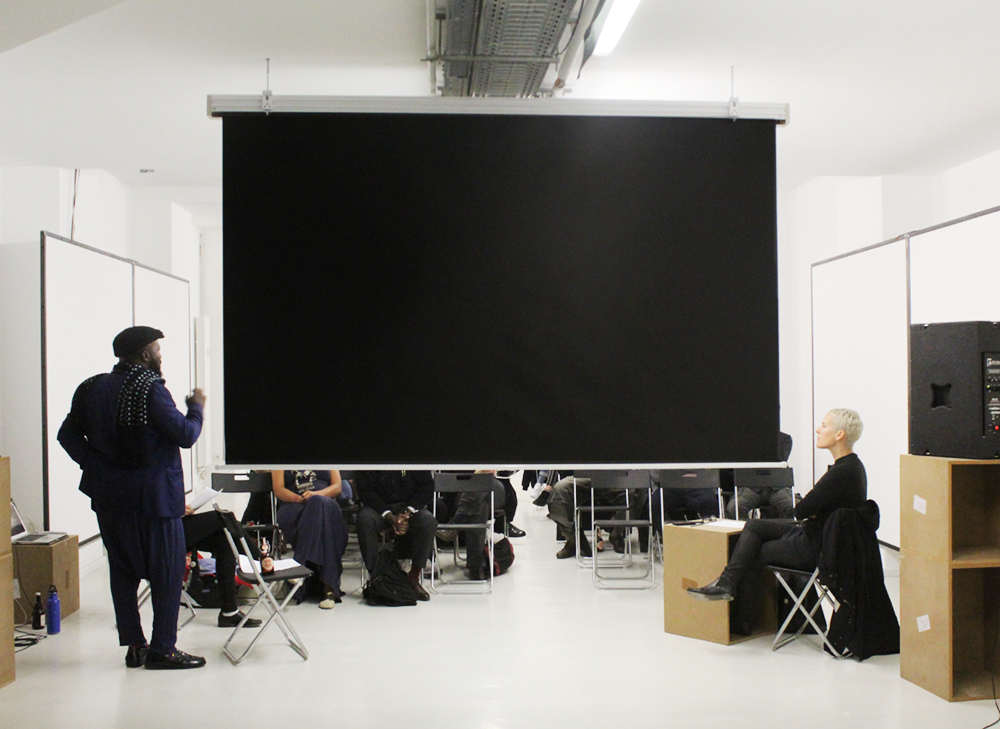How Bodies Appear: Experimental and Documentary Film from the late 1980’s GDR
HOW DOES THE WORLD BREATHE NOW?
SESSION N°36 27.09.2017 19:00
WITH Elske Rosenfeld
FILM Body Building 1988 25 minutes
BY Wolfgang Scholz
LANGUAGE German with English subtitles
FILM Veitstanz/Feixtanz 1988 25 minutes
BY Gabriele Stötzer
LANGUAGE German with English subtitles
FILM Material (excerpts) 2009
BY Thomas Heise
LANGUAGE German with English subtitles
For our 36th screening Elske Rosenfeld brings us Body Building from Wolfgang Scholz, Veistanz/Feixtanz from Gabriele Stötzer and MATERIAL from Thomas Heise as examples of experimental and documentary film from the GDR.
Elske Rosenfeld explains her choice of films as follows:
Body Building is a documentary film about a body building group; the time spent by these men torturing themselves among their self-made machines. We see them passing time in a training barrack: a rhythm of sweating bodies whose only aim is to develop larger muscles as a symbol of greater strength. Body Building was considered a capitalist sport and frowned upon in the GDR. More details under: scholz-w.de
Veitstanz/Feixtanz shows a number of people/ a cast of characters from the different (non-)scenes of the late GDR – a punk, a pregnant woman, a dancer, a peacenik, an old woman, a football fan – dancing themselves into a trance in a setting chosen by each of them – on the sidewalk, on the roof-tops, by the river, on a playground, in front of a ruin, in the East German city of Erfurt – against a soundtrack of trams and passers-by. More info at her wikipedia page
Material(excerpts) is, to my mind, the best and most comprehensive document of the revolution of 1989/90 in the GDR. Whether he films from the margins or from right at the heart of revolutionary events – a political assembly of wardens and prisoners in a Brandenburg jail, a rally outside the Socialist Party HQ in Berlin, a townhall-meeting in a Berlin suburb – Heise’s images convey the radical urgency of the events that have been obscured and neutralised in their historization as “the Fall of the Berlin Wall”. It is telling, too, that it took the film-maker 20 years to revisit his previously unpublished footage. More details under: heise-film.de
In each of these films, bodies appear as agents and subjects of the specific forms of the political of the late GDR and the revolution of 1989. My motivation for showing this selection is two-fold: Firstly, to invite you into a conversation around the body as a site and archive of political events whose experience exceeds the tropes of narrativization in which they come to be historized and closed down.
Secondly, to share an impression of the state-socialist histories that have left such few traces on the physical and immaterial landscapes of present-day Berlin and its various, increasingly transient cultural scenes.
Elske Rosenfeld (born 1974 in Halle/Saale, GDR) uses different textual and artistic formats to look at the relationship between specific historical, as well as contemporary scenarios of political upheaval, and their potential for affecting political change. Her ongoing project “A Vocabulary of Revolutionary Gestures” focuses on the bodily, gestural content of archival footage from situations of revolution or protest, to develop abstracted interventions into and around these materials. Her work has been shown internationally in group and solo presentations, among others at Herbstsalon III, Gorki Theater Berlin 2017 (upcoming); mumok kino, Vienna, 2016 and 2013; Rencontres Internationales 2016 Paris and Berlin; Steirischer Herbst 2015, Graz; tranzit, Cluj, Romania, 2013; Devi Art Foundation, Delhi, 2013. Her texts have appeared in Springerin – Hefte für Gegenwartskunst and on eipcp.net, among others. www.elskerosenfeld.net

